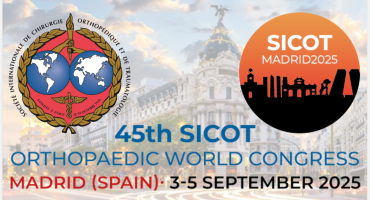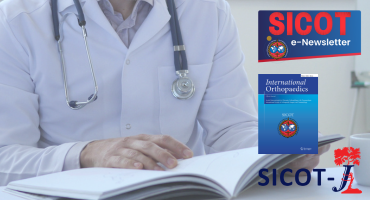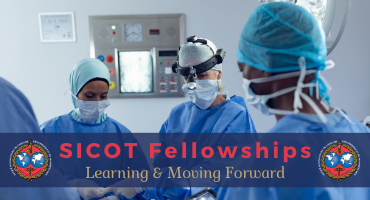Pelvic Obliquity: A Possible Risk Factor for Curve Progression After Lumbosacral Hemivertebra Resection with Short Segmental Fusion
J Bone Joint Surg Am. 2025 Apr 25. doi: 10.2106/JBJS.24.00331. Online ahead of print.
ABSTRACT
BACKGROUND: A lumbosacral hemivertebra poses a unique problem, as it leads to a long compensatory curve above it and an obvious main curve. One-stage posterior hemivertebra resection with short segmental fusion is a standard surgery for patients with congenital scoliosis, but curve progression often occurs after surgery. The objective of this study was to investigate the risk factors for curve progression in patients who underwent 1-stage posterior hemivertebra resection with short segmental fusion.
METHODS: This study included 58 Han Chinese patients with congenital scoliosis who underwent 1-stage posterior hemivertebra resection with short segmental fusion. Baseline information, radiographic parameters, and the Scoliosis Research Society-22r questionnaire were collected preoperatively, 3 months postoperatively, and at the last follow-up. Risk factors for curve progression were evaluated using logistic regression analysis and receiver operating characteristic (ROC) curve analysis.
RESULTS: The mean age at surgery was 7.3 years, and the mean follow-up was 7.5 years. Nine patients (15.5%) were diagnosed with curve progression at the final follow-up. Compared with their preoperative condition, patients exhibited a significant reduction in the main curve (95% confidence interval [CI], 25.2° to 28.9° preoperatively versus 6.8° to 9.4° at 3 months; p < 0.001), compensatory curve (95% CI, 15.0° to 19.8° versus 5.5° to 8.1°; p < 0.001), and coronal balance (95% CI, 12.4 to 16.9 mm versus 7.0 to 10.5 mm; p < 0.001) at 3 months postoperatively. The progression group had larger preoperative pelvic obliquity values than the non-progression group (95% CI, 3.19° to 6.55° versus 2.01° to 2.63°; p = 0.008). The logistic regression analysis revealed that preoperative pelvic obliquity was a significant independent risk factor for curve progression (odds ratio, 1.653; 95% CI, 1.096 to 2.495; p = 0.017). The ROC analysis revealed that preoperative pelvic obliquity had good discriminatory capability (area under the ROC curve, 0.876; 95% CI, 0.677 to 1.000; p < 0.001).
CONCLUSIONS: In summary, preoperative pelvic obliquity was an independent risk factor for curve progression, which means that preoperative measures should be taken to ensure minimal pelvic obliquity in patients in order to effectively prevent curve progression. The presence of pelvic obliquity should alert the surgeon and patients to the high risk of deformity progression and to the need for scheduling more frequent follow-ups as appropriate.
LEVEL OF EVIDENCE: Prognostic Level IV. See Instructions for Authors for a complete description of levels of evidence.
PMID:40279408 | DOI:10.2106/JBJS.24.00331














